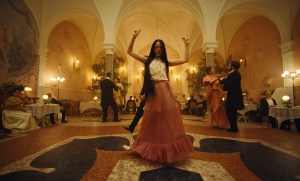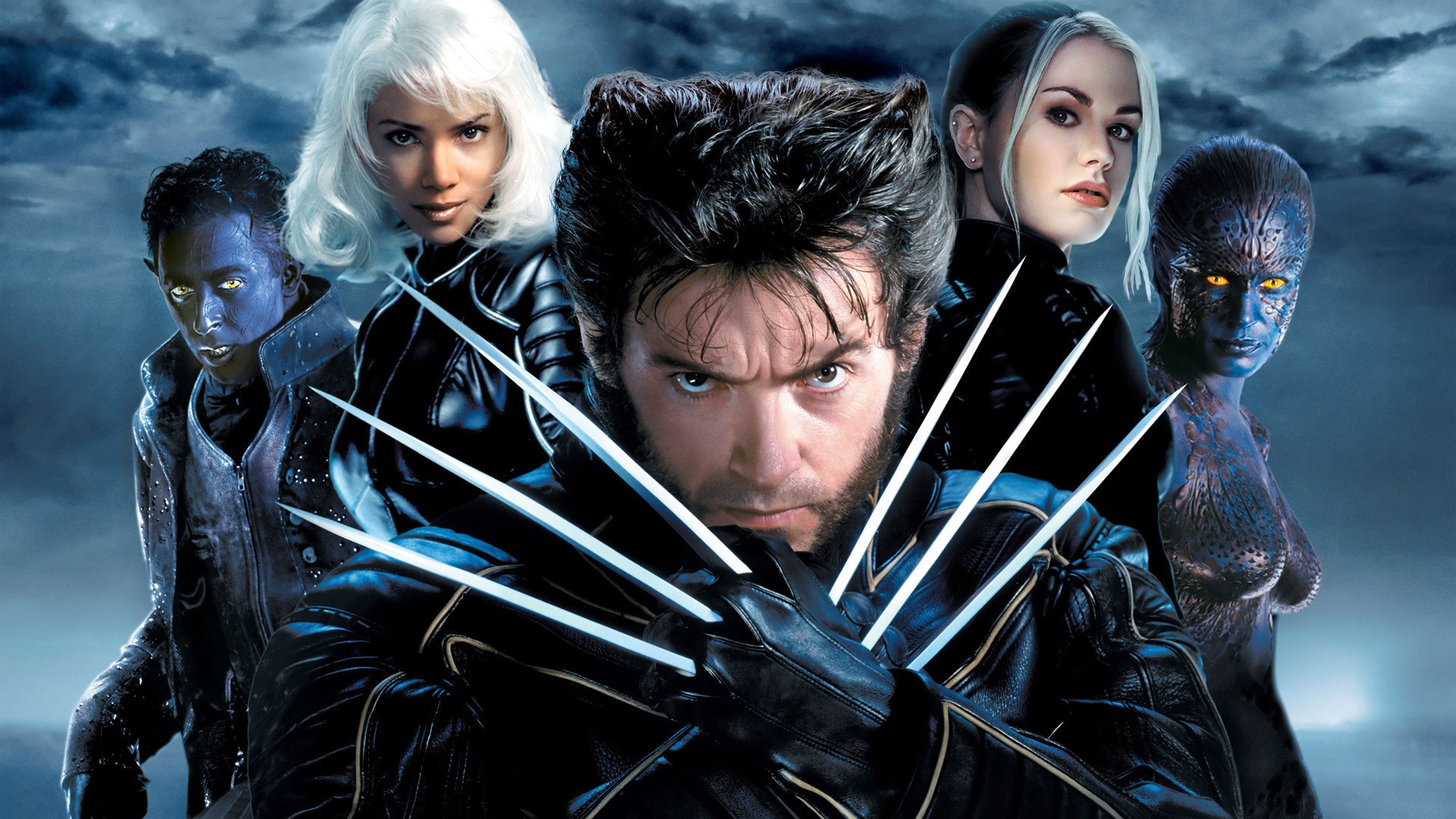More often than not, Yorgos Lanthimos’ movies have fascinated but not entirely compelled me. They presented lavishly constructed tableaux to make up for their storytelling shortcomings, which made the experience of watching films like The Lobster or The Killing of a Sacred Deer inherently frustrating. The Favourite works because of Olivia Colman’s star-making performance and a twist on the period piece Fisheye popularized by Stanley Kubrick and cinematographer John Alcott in Barry Lyndon. When Poor Things was announced, I was still highly skeptical that it would amount to something enthralling, but I’m pleased to report it’s not only that but also darkly amusing and unabashedly gothic.
It also contains a career-best turn from Emma Stone, who portrays Bella Baxter, a woman reanimated by Dr. Godwin Baxter (Willem Dafoe), who discovered her body after she jumped to her death under the London Bridge, pregnant with the child of Alfie Blessington (Christopher Abbott). Dr. Baxter resurrects her by transferring her baby’s brain inside of her, allowing Bella to live a new life with a different identity but confined inside his quarters.
With the arrival of Max McCandles (Ramy Youssef) to help Dr. Baxter monitor Bella’s evolution, God (Bella calls him that) asks Max to marry her in the hopes they will live a quiet and peaceful life together. However, when Duncan Wedderburn (Mark Ruffalo) reviews the contract that will legally bind Max and Bella for eternity, he takes Bella away to Lisbon to make her see the world and discover life’s [sick] pleasures.

Emma Stone in POOR THINGS. Photo by Atsushi Nishijima. Courtesy of Searchlight Pictures.© 2023 Searchlight Pictures All Rights Reserved.
Things don’t go the way Duncan hopes, and that’s where the movie shifts from black-and-white to color and becomes divided into sections, representing the areas of the world Bella will visit on her trip. Already, Lanthimos has created a rich visual language highly inspired by the work of Georges Méliès, German expressionism, and Frederico Fellini’s And the Ship Sails On (that part becomes apparent when they board a cruise ship) with cinematographer Robbie Ryan, two-for-two in crafting the most visually striking productions of the year, alongside Medusa Deluxe, a 1.33:1 single take set in a claustrophobic hairdressing competition.
While Medusa Deluxe’s storytelling contrivances prevented the film from soaring, Ryan’s staggering cinematography never made the movie a dull affair and carried our appreciation for its meticulously choreographed “one-take” (the invisible cuts aren’t obvious, always finding ways to make the transitions seamless). Poor Things doesn’t have any tracking shots, but it sure loves to use Fisheye, smash zooms, and even place the camera in a peephole for an even more distorted image.
Consider the scene where the audience gets adequately introduced to McCandles – the ultra-wide use of Fisheye helps the audience perceive the malformed world Bella will live in. In contrast, smash zooms help us focus on McCandles, the only man of reason in this room with Dr. Baxter. Every visual cue, whether big or small, helps inform the viewer on how they should perceive what they’re watching and approach the characters as they develop in front of their eyes.

Willem Dafoe in POOR THINGS. Photo by Atsushi Nishijima Courtesy of Searchlight Pictures. © 2023 Searchlight Pictures All Rights Reserved.
McCandles is an interesting one, deftly portrayed by the brilliant Ramy Youssef. In the film’s second and third acts, he takes more of a backseat, but Youssef consistently makes the most of his comedic prowess in his limited screen time. Youssef is no stranger to awkward humor, as he’s developed his own style over the years through stand-up comedy and on his Hulu television series, Ramy, which thrives in massive amounts of cringe comedy to make the audience feel as uncomfortable as possible (at all times). And so when it’s his turn to feel deeply uncomfortable through the prism of McCandles, he more than succeeds. The awkward chemistry he shares with Stone is one of the movie’s most significant highlights and is part of the movie’s very best scene when he directly gets to confront Ruffalo’s Wedderburn.
Speaking of, Ruffalo’s perfectly stilted performance as Wedderburn may potentially spark fury in those who don’t know that his character is supposed to be a phony, from the way he acts towards Bella to the way he presents himself as a gentleman in an allegedly polite society. His performance isn’t supposed to be serious, nor too funny. It’s in that fine line of thinking it’s bad, but it’s actually genius, a bit like Tommy Wiseau in The Room. And I mean this in the highest compliment. When Ruffalo yells “Bella!” à la Marlon Brando in A Streetcar Named Desire, it’s Wiseau’s failed attempt to become Brando that Greg Sestero describes in The Disaster Artist. And when Ruffalo says, “Where’s my fucking money?” in a comically bad way, what movie are you currently thinking about?
But the real star of the picture is Stone, who is utterly magnifying from beginning to end. If her portrayal of Abigail in The Favourite was pure absurdity, then Bella Baxter is a mixture of her skills developed in The Favourite with a burlesque flair. But I can’t entirely put my finger on what she’s doing because as Bella learns more about the world, her behavior (and personality) changes in real-time. The Bella we meet at the film’s beginning will not be the same when it reaches its glorious final shot, and that’s Yorgos’ biggest achievement. Each character encounters a psychological transformation, but whether this is good or bad will be up to you to find out. All I’ll say is this: they won’t be the same by the time the film ends, and you won’t be the same after it’s over.

Mark Ruffalo in POOR THINGS. Photo by Yorgos Lanthimos. Courtesy of Searchlight Pictures. © 2023 Searchlight Pictures All Rights Reserved.
Through its barrage of uncomfortably awkward situations, whether it’s Willem Dafoe burping a bubble that floats through the air or sex scenes that excessively use Fisheye to continuously distort the act (and yet, some of the sex is also surprisingly horny), the slightest flinch from a character or deadpan facial expression could be the funniest thing you’ve seen on a screen this year.
There’s no shortage of surprises in Poor Things, which simultaneously inspire shock and awe. Its final twenty minutes may grind its pacing to a glacial halt by introducing a new character. Still, the rest of the film is a magical and often gut-bustlingly hilarious look at the twisted trappings of the so-called “polite society,” slowly revealing its sick ways to its head as Bella explores it further and sees there is no way to conform but to stop listening to the powerful men in her life and draw her destiny. The way Lanthimos portrays this shift contains lots of explicit sex inside its 141-minute runtime, which may not be the crowd-pleasing way to do it. But when the film is presented in such an unnaturally hilarious and artistically exciting way, who are we to complain?
Poor Things releases in theatres on December 8.








Leave a Reply